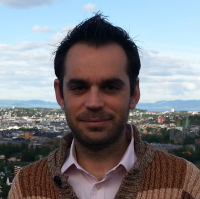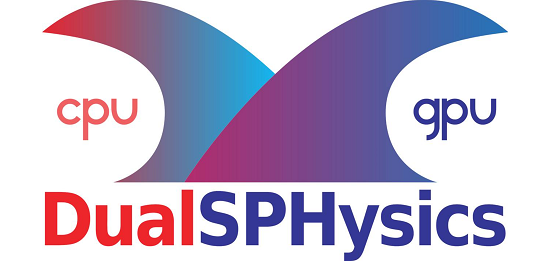Keynote Speakers
Guest Keynote Lecture: “A brief story of numerical diffusion in SPH”
Wednesday, March 20, 2024 - Time 9:20 AM (Aula Magna E. Orabona)
Dr. Matteo Antuono & Dr. Salvatore Marrone (CNR-INM, Institute of Marine Engineering)


Abstract
Since numerical schemes have existed, numerical diffusion has been playing a central role for their stability, robustness and accuracy. In the present talk, a brief story is proposed on how numerical diffusion has been introduced in the Smoothed Particle Hydrodynamics (SPH) and why it has been so effective in enlarging its range of applications. Besides the main models, the presentation describes the historical and theoretical path that led the evolution of the SPH method from the beginning up to the state-of-the-art schemes and the contributions coming from other numerical models. The influence of numerical diffusion on the conservation properties of SPH schemes and its interaction with particle shifting algorithms will be addressed. Examples and applications of some of the SPH models described in the talk will be provided as well as most recent developments in this context.
Bio
Matteo Antuono's activity is essentially focused on two distinct research branches. The first one is devoted to the theoretical foundations and numerical modeling of the meshless method called Smoothed Particle Hydrodynamics (SPH). Such work is addressed to the analysis of wave-structure interactions, breaking waves, vorticity generation at the free surface and to practical naval problems (e.g. sloshing motions). The theoretical activity in this field led to the definition of the δ-SPH model which is, nowadays, one of the most widespread and accurate variants of the standard SPH model. More recently, Matteo has contributed to the definition of Large-Eddy-Simulation models in the SPH framework and to the development of quasi-lagrangian variants of the SPH scheme. The second branch of Matteo's research deals with the theoretical and numerical study of the wave propagation in the coastal region. In this field the main interest is on the influence of the seaward boundary conditions on the dynamics of the swash zone, with specific interest on the prediction of the beach inundation and on the interaction with the seabed bathymetry. In this perspective, Matteo recently focused on the extension of the dispersive/nonlinear Boussinesq-type equations to describe wave propagation from deep- to shallow-water conditions.
Salvatore Marrone is a Senior Researcher at CNR-INM. The main focus of his research is the computational aspects of Mesh-Free numerical methods (Smoothed Particle Hydrodynamics and Diffused Vortex Hydrodynamics) and the development of coupled solvers using mesh-free methods for solving either fluid-structure interaction problems and multi-scale fluid mechanics problems. These research activities are aimed at applications in the naval and marine engineering contexts, especially regarding wave breaking, water impact problems and, more generally, to violent free surface flows. Salvatore has been co-developer of an industrial SPH code in collaboration with Ecole Centrale de Nantes and Nextflow Software and has recently joined the PEPC open-source project for the development of a vortex particle method.
Developer Keynote Lecture: “Industrial use of DualSPHysics: past, present and future”
Thursday, March 21, 2024 - Time 11:10 AM (Aula Magna E. Orabona)
Dr. Georgios Fourtakas (University of Manchester)

Abstract: The last few years, the SPH scheme has reached its maturity from a numerical, modelling and computational prospective. As the scheme matures, it transitions beyond academia and finds its way to industry on challenging and exciting applications which might have been unattainable in the past. This transition also applies to solvers such as DualSPHysics. It is derived form an open-source philosophy that was initially started as a tool to be shared within the academic community. With industrial inspired research and interaction directly with the industry, the DualSPHysics solver evolved to a multi-physics software suite capable of modelling real-life engineering problems. In this talk, we will explore how the DualSPHysics software suite has been used in industry in the past, its evolution and future in relation to industrial application. We will also explore the limitations and aspirations of the current solver but most importantly link them to the industrial expectations.
Bio: Dr Georgios Fourtakas is a Lecturer in complex flow modelling and simulation at the Department of Mechanical, Aerospace & Civil Engineering of the University of Manchester. He specializes in Lagrangian, Eulerian and high-order particle discretisation schemes such as SPH, complex flows including multiphase and non-Newtonian flows, and sediment scouring and resuspension. George has expertise in high performance computing and heterogeneous architectures within the particle methods framework. He is a core developer of the open-source code DualSPHysics and maintainer for the non-Newtonian and multiphase variant of the solver.
